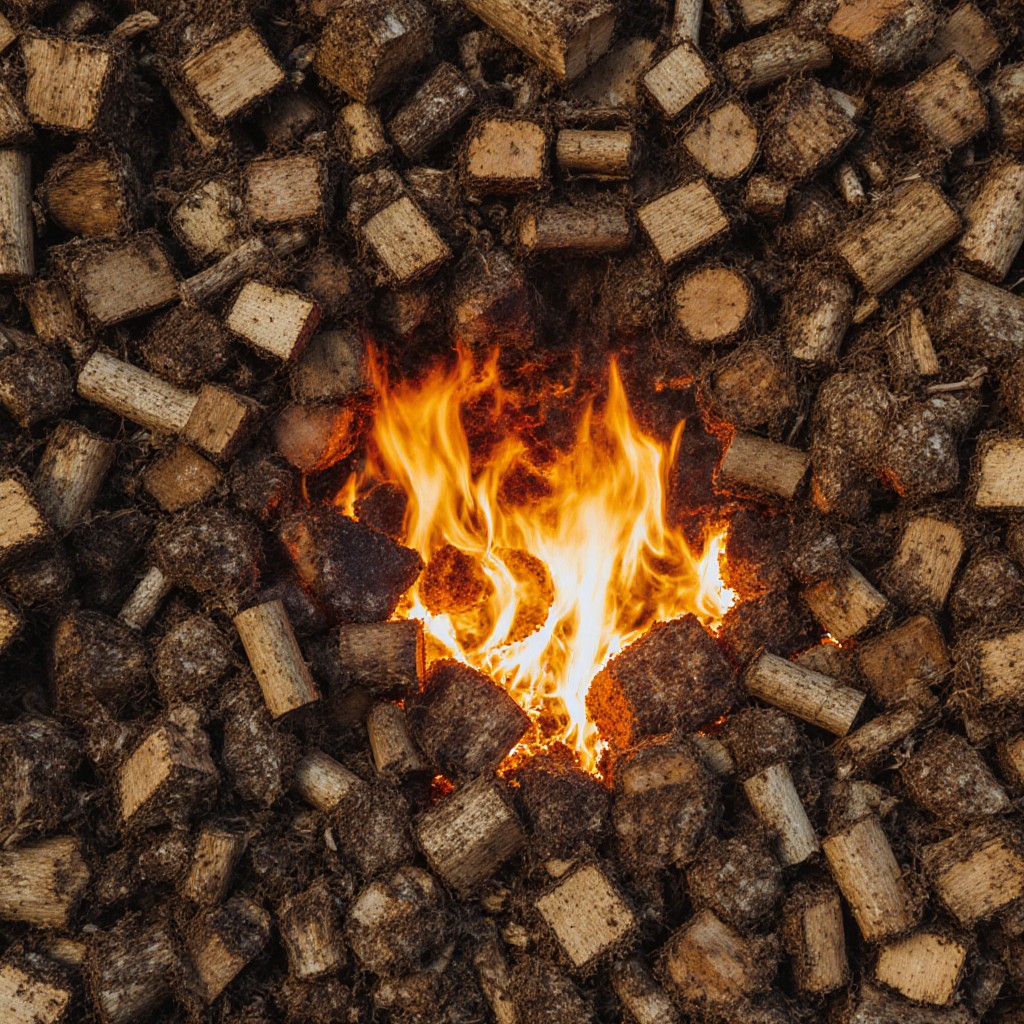Answers For VOL 4 Test 2 - Biomass fuel
Answers and detail explain for VOL 4 Test 2 - Biomass fuel
1.
cost
2.
store
3.
powder
4.
holes
5.
electricity | energy
6.
starch
7.
agriculture
8.
factories
9.
businesses
10.
demand
Explain
VOL 4 Test 2 - Biomass fuel

0:00
0:00
Lecture: Good afternoon, everyone. In this course, we've been discussing the principles of sustainable development, and now we're going to look at some of the ways in which these principles are being put into practice. Today, I'm going to talk about the use of biomass. And for those of you who don't know what biomass is, it's plant material, usually agricultural waste such as sawdust or straw, and briquettes made out of biomass are used as fuel, either in the home or in industry. I'll start with the benefits.
1Using briquettes has a financial benefit because they make use of waste products as raw materials, so there isn't any cost involved for that. Another advantage is convenience. 2Handling briquettes is cleaner than handling materials like wood or charcoal. Also, briquettes are less trouble to store because they're a uniform size and shape. Right.
Let's look briefly now at how these briquettes are made. There are two basic methods of manufacture. The first method uses machinery. At the initial stage, 3all the loose plant material is ground into a powder and then mixed with other materials. Next, a machine compresses the biomass mixture, and that process raises the temperature and causes it to melt.
4The machine forces the biomass mixture out through rectangular or circular holes. Then, as the pressure decreases, the mixture cools and becomes solid again, and that's how the briquettes are formed. 5It's important to point out that with this method, electricity is essential to operate the machinery, and the exact amount you need depends on the type of biomass you use. But generally, the amount required is only 3% to 9% of the energy that's produced by the briquettes when they are burnt. The second method involves making briquettes by hand.
This method is suitable when the biomass is mainly composed of material that doesn't melt, like paper. 6The biomass is made into a paste by adding water, and in addition, something sticky such as starch. This mixture is then shaped using either a simple metal press or bare hands.
So where is biomass fuel used and how extensively? Well, it's difficult to obtain detailed figures, but 7it's been used for several years in Europe and The USA, mainly for agriculture. And since February, there's been a rapid increase in the production and use of briquettes made out of wood waste. I can give you a ballpark figure. In 02/2010, about 5,000,000 tonnes were used in Europe.
Some of these had to be imported from The USA. Moving further east, both India and China have been producing biomass briquettes since the nineteen nineties. Detailed figures are hard to come by, but in China, in 02/2002, 8the number of factories producing biomass briquettes had increased to approximately 600, and production is still growing. I don't have information about Africa in general, but I can give you an example of one company in Uganda which is producing briquettes. 9Most of the company's customers are public institutions like schools and universities that provide hot meals for their students. The other main users are businesses that need a source of heat for producing their products. Okay. Well, how viable are biomass fuels like these in economic terms, and what is likely to happen in the future? Well, the answer depends partly on the price of the fuels that they replace, and that varies from place to place. But in general, 10the demand for biomass fuels is almost certain to grow, and that can only benefit the environment.
Let's turn now to another facet of...
Question 1-10
Complete the notes below. Write ONE WORD ONLY for each answer.
Biomass fuel
-
Biomass is waste plant material, e.g. sawdust, straw.
-
Biomass briquettes can be used as domestic or industrial fuel.
Benefits of biomass briquettes
-
Financial: no 1 (cost) for materials
-
Convenience: clean and easy to handle and 2 (store)
Production by machine
-
Biomass is first converted to a 3 (powder) . Then other substances are added.
-
The machine expels the mixture through 4 (holes) of different shapes.
-
N.B. Only a relatively small amount of 5 (electricity | energy) is needed to operate the machine.
Production by hand
-
Biomass is mixed with water and sticky material, e.g. 6 (starch) , and then pressed into shape.
Current use
Europe and the USA
-
Briquettes have been in use for some time for 7 (agriculture)
-
The use of briquettes made from wood has increased rapidly.
India and China
-
1990s: briquette manufacture began.
-
2002: China had about 600 8 (factories)
-
Uganda
-
Customers are mainly public institutions or 9 (businesses)
Prospects for biomass fuel
-
The 10 (demand) is likely to increase
![[Forecast Q2-2025] - Biology lecture](https://static.helik.app/reading/8fd3d7d2-ccf9-47a3-8920-2e7a3b0d6607)
![[Forecast Q2-2025] - Living in the City](https://static.helik.app/reading/1a60bcf3-f3a7-4e9b-97a2-94d156a0de3b)
![[Forecast Q2-2025] - Student Union](https://static.helik.app/reading/fb443123-8c1d-447e-8c79-5a01650f4754)
![[Forecast Q2-2025] - Fruit-picking Job in an Orchard](https://static.helik.app/reading/e1968346-6c55-44ae-b8d3-f6a4fb7207b9)
![[Forecast Q2-2025] - University Crime Prevention](https://static.helik.app/reading/bdda593e-16d6-4c72-8a12-b116e917b27c)
![[Forecast Q2-2025] - Business Course](https://static.helik.app/reading/3308e282-99a6-4bcb-9d22-0b488701d968)
![[C20T1] - Choosing a restaurant](https://static.helik.app/reading/e9b21123-c43c-42fb-88b7-5d0be3a37e03)
